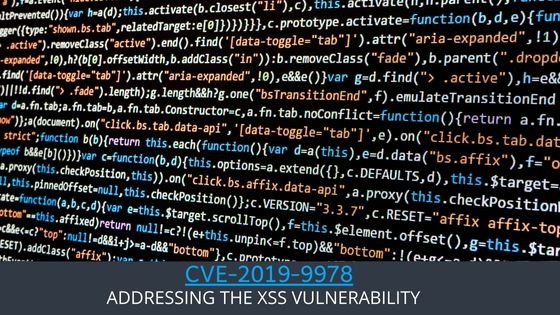Managing Director @ Datacipher , a system integrator, professional services , networking and cloud security services organisation.
The Red Cross had over half a million records compromised in January 2022, resulting in thousands of people’s sensitive data being stolen and victims being listed as missing or vulnerable.
In February 2022, hackers attacked Marquard & Bahls, a German energy giant. This resulted in the destabilization of its IT infrastructure and the closure of more than 200 gas stations across Germany. In addition, this attack disrupted fuel supplies for other companies like Shell.
Ronin, a blockchain gaming platform, suffered a breach between November 2021 and March 2022, where cybercriminals stole $600 million worth of cryptocurrency.
These are just a few examples of top data breaches that took place last year. Organizations and enterprises should take the necessary steps to prevent such incidents from happening. Moreover, there are steps larger enterprises can take to proactively secure themselves against cybersecurity attacks and avoid potential damages.
MORE FROMFORBES ADVISOR
Best Travel Insurance Companies
Best Covid-19 Travel Insurance Plans
Proactive Measures To Keep Cybersecurity Attacks At Bay
Usually, an enterprise would need a security framework like SASE (secure access service edge) as a preventive measure. The enterprise should take five essential steps as a part of the SASE umbrella.
1. Switch To Zero Trust Network (ZTNA) Access 2.0 From 1.0
ZTNA 2.0 has been designed to improve over ZTNA 1.0 to address the increased cybersecurity risks organizations face today, primarily due to the rise of hybrid work and direct-to-app architectures.
Additionally, ZTNA 2.0 addresses the shortcomings of ZTNA 1.0 solutions, which have been criticized for providing too much access with too little protection, delivering inconsistent and incomplete security and exposing organizations to the increased risk of a data breach.
ZTNA 2.0 also uses more dynamic and adaptive security measures that can adapt to user or app behavior changes and detect and prevent malicious activities. In addition, ZTNA 2.0 can also properly secure modern cloud-native apps, apps that use dynamic ports and server-initiated apps, which ZTNA 1.0 solutions are not capable of.
2. Choose A Vendor That Has A Proven Track Record For Security Efficacy
Partner with a systems integration vendor that has a proven track record for protection and security efficacy. You should look for vendors who have the following.
• Industry certifications such as SOC 2, ISO 27001 and PCI DSS.
• Undergone third-party security audits such as penetration tests and vulnerability assessments.
• Regular product updates and security patches.
• Certified security experts on their team, such as CISSP or CISA.
• Positive customer testimonials.
It’s crucial to conduct due diligence on the vendor to ensure they meet your security and compliance requirements and understand how the vendor will secure and manage your data, systems and networks.
3. Choose A Vendor That Offers A Flexible Consumption Model
Security solutions are traditionally licensed per user per year, and having multiple vendors for networking and security solutions can add complexity and reduce flexibility.
The answer is to look for a vendor which offers a simple and flexible consumption model where networking and security solutions are included in the same license. Moreover, the model should ideally provide scalability to meet the organization’s unique needs and adapt as the organization grows.
4. Choose A Vendor That Supports Hybrid Work Approach
Hybrid work opens doors for network security breaches through personal devices. In addition, employees may be more likely to engage in risky behavior, such as using unsecured Wi-Fi networks or sharing login credentials, which can also increase the risk of a security breach.
These risks make it vital to partner with a vendor that can add another layer of strict security measures without disrupting your existing infrastructure.
5. Get Robust Threat Intelligence To Block Threats Proactively
Effective threat intelligence is crucial for protecting your organization from cyberattacks.
A robust and active threat intelligence system that can learn from internet activity patterns helps block threats before they can harm your organization.
When selecting a vendor for threat intelligence, it’s critical to find one that offers real-time analysis of live threat feeds from global internet activity and uses a combination of human expertise, statistical analysis and machine learning to stay ahead of emerging threats.
Parting Thoughts
According to a survey report by Ernst and Young (EY)—“Reshaping the future of compliance with emerging technologies”—about 40% of the respondents reported a cyber breach over the last year, with 11% of such cases resulting in a financial loss.
Increasing cybersecurity attacks, hybrid work environments, innovative technology solutions and more make it mandatory to conduct regular network hardware and software audits. These audits can help keep cybersecurity attacks at bay by identifying vulnerabilities and weaknesses in the system that attackers could exploit.
They can also help detect any unauthorized devices or software that may have been installed on the network, which could also be a potential security threat. Additionally, regular audits help ensure that all software and security patches are up to date and that all security protocols are being correctly implemented.
Finally, regular network audits can help an organization proactively address potential security issues before attackers can exploit them.
Forbes Technology Council is an invitation-only community for world-class CIOs, CTOs and technology executives. Do I qualify?





